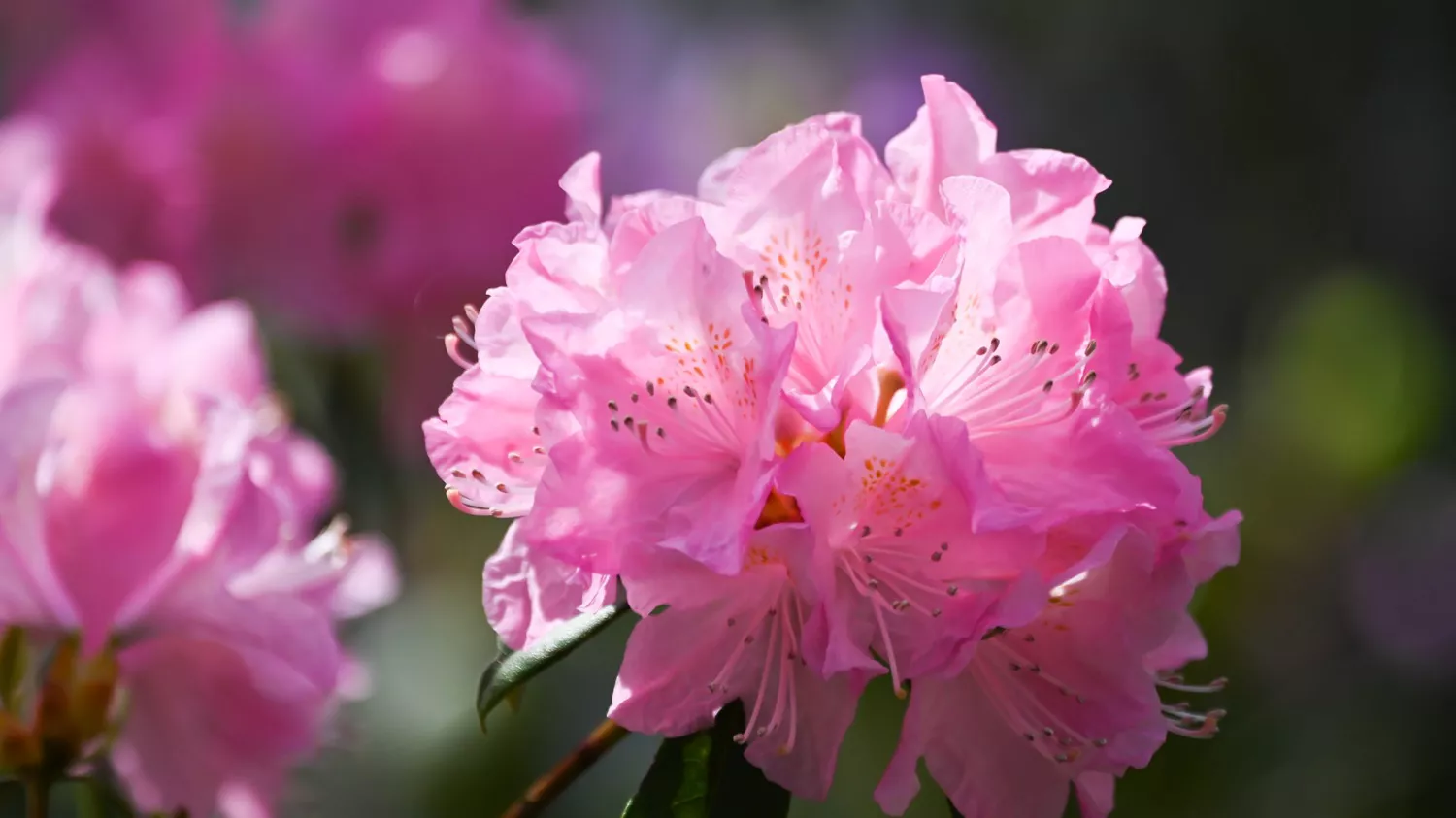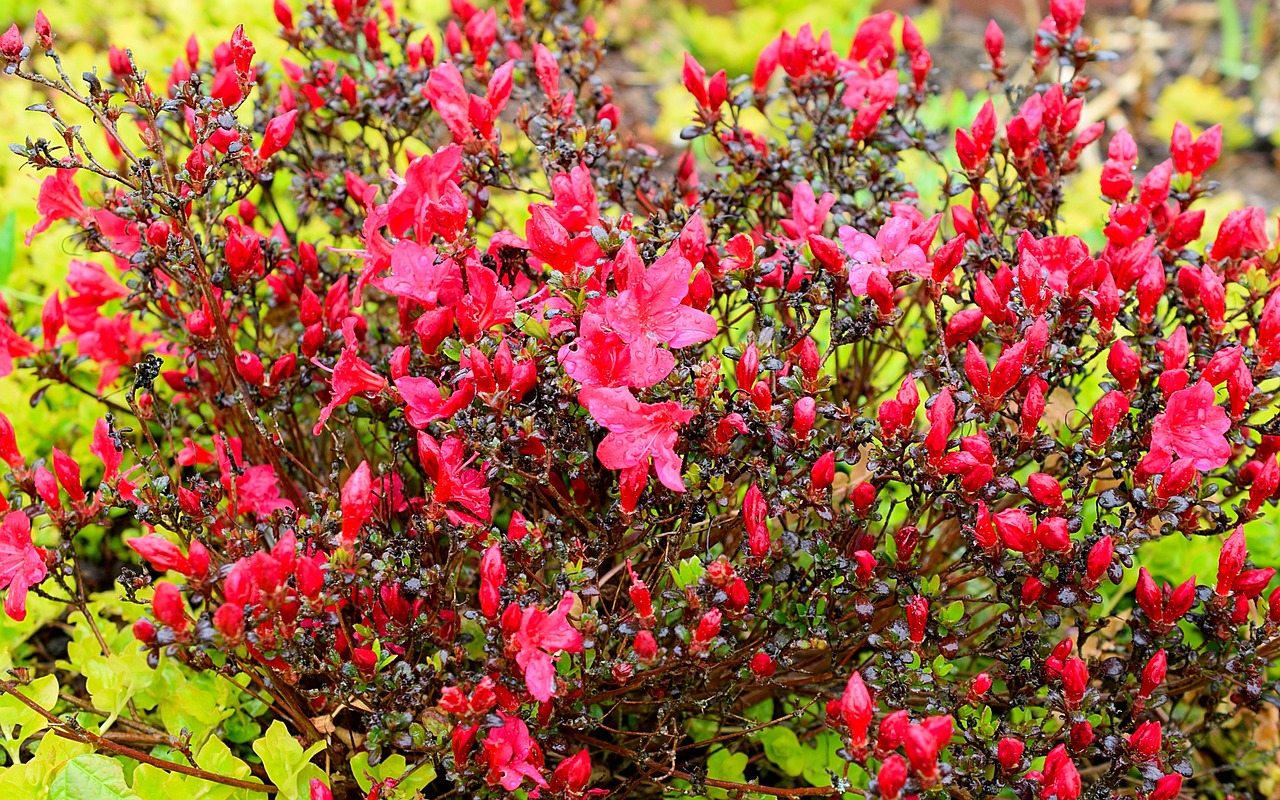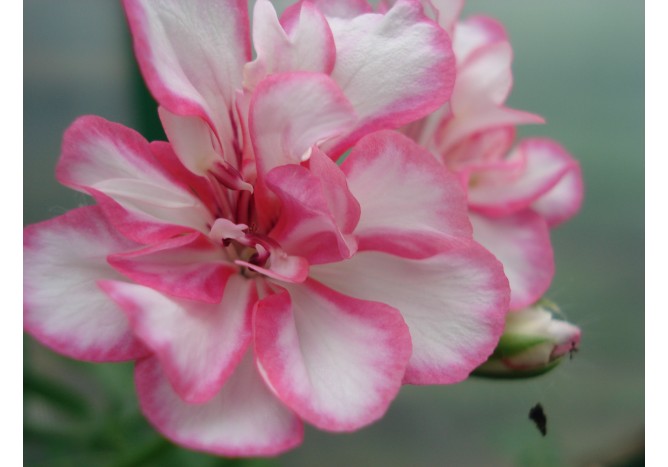
I have a soft spot for azaleas. I associate them with Easter egg hunts, Masters Tournament golf, and my Aunt Nana. I can smell the light perfume of a ‘George Lindley Taber’ azalea in my dreams. But over the years, I have fallen in and out of love with azaleas. This fickle relationship is partly my fault, as there have been times when I haven’t followed my own advice and remembered some fundamental facts about them.
Azaleas are easy to care for and a fit for most gardens, but that doesn’t mean they don’t have some basic needs that require attention. Below are our top tips for taking care of your azalea bushes; do so and they will reward you with the blooms of your dreams.
1. Buy new azaleas in bloom.
Most people have a particular color in mind when adding an azalea to their garden. One way to guarantee the color you want is to buy flowering plants. You will be sure to get the right color, and if you are buying several you can see if they match or blend. When in doubt, white is usually a safe bet. Resist the temptation to plant one of every color.
2. Group plants for impact.
To get the most impact, set out blocks or sweeps of the same selection. Ten types scattered across the front of your house will be colorful but chaotic. For the best effect, plant azaleas of the same hue in generous drifts, and sandwich them between other shrubs.

3. Pick the right size for your space.
Not all azaleas are low-growing shrubs. The Southern Indian hybrids reach 8 to 10 feet tall in some parts of the South and should be planted at least 4 feet apart. Some overzealous gardeners don’t realize this and soon find their sidewalks and houses consumed. The medium-size Kurumes grow 3 to 5 feet tall and need a 30-inch spacing. Satsuki hybrids—including Gumpo, Macrantha, and Wakaebisu—generally grow less than 3 feet tall and are perfect for planting under low windows. Ideally, shrubs should fall 6 inches beneath the sill of a window at their tallest. Satsukis can be placed 2 feet apart for a nice full look. Don’t crowd new plants together; space them for the future, not for instant effect.
4. Give them the light they love.
As with any plant, when you’re choosing the best spot to place azaleas, take the sun into account. Azaleas perform best when placed in dappled light or in areas that receive morning sun and light afternoon shade. Large beds beneath tall pines or wooded borders are perfect. Direct, hot sun will scorch leaves, and plants will become susceptible to spider mites and lace bugs. Given too much shade, azaleas may not flower at all.
5. Azaleas need acid soil.
Azaleas love moist, acid, well-drained soil with lots of organic matter. They won’t thrive in heavy clay or nutrient-deficient sand. Adding plenty of leaf mold, peat moss, or bark to your soil can help create the ideal environment for an azalea bush. This is particularly important if you’re placing the plants near your home’s foundation, where lime can leach out of concrete foundations and neutralize acid soils. Limestone gravel used for drainage around your home can also cause soil to be too alkaline. When planting several azaleas, prepare the entire bed instead of just the hole. In alkaline soils (like those in Texas and Arkansas) that are beyond amending, you may want to try growing a few specimens in raised beds or containers.
6. Regular watering and good drainage matter.
It is critical for azaleas’ survival that they receive regular water during their first two years while getting established but proper drainage is also key. Avoid planting azaleas near downspouts or areas that stay damp. The bed should be slightly mounded so excess water drains away from plants.
7. Planting in clay will take some prep.
If you’re planting an azalea bush in heavy clay soil, plant it almost on top of the ground, building soil up on the sides of the root ball. Dig a hole as deep as the root ball and twice as wide. Add soil enriched with organic matter to the hole so that the top of the root ball will sit 4 inches above ground level. Place the root ball in the hole, and build up the soil on the sides. Planting high gives the shrub the drainage it needs, but you will need to water frequently.
8. Practice restraint when pruning.
Avoid the urge to shear your plants into round balls or other geometric forms. Azaleas look best when allowed to grow to their natural mounded shape. Limit pruning to removing long, stray branches. Older plants that have become leggy may benefit from pruning branches from the main trunk in staggered lengths. If you have to prune hard every year, you probably have the wrong azalea for that location, or your plants are too close together.

9. “Evergreen” doesn’t mean leaves live forever.
Generally speaking, you shouldn’t worry if a few of your azalea leaves turn yellow and drop off, especially in the fall. All evergreens drop some leaves during the year. They’re just making way for new growth. If brand new leaves seem to be turning yellow long before maturity, however, you may have something to worry about.
10. Azaleas are accents, not centerpieces.
Azaleas should be a part of the garden, not the garden. Sure, they’ll be gorgeous for two weeks, and you may even extend bloom time over six weeks by planting early-, mid-, and late-season selections. But you still have 46 more weeks in the year. Landscape architect Ben Page of Nashville is a fan of using native deciduous azaleas in conjunction with evergreen ones. “They add fragrance, an extended color palette, and winter and summer interest,” says Page. Most important, they loosen the look and provide contrast in the landscape. “Be patient,” Page advises. “Young deciduous azaleas may not immediately look as nice as evergreen ones, but the payoff is worth the wait.”





